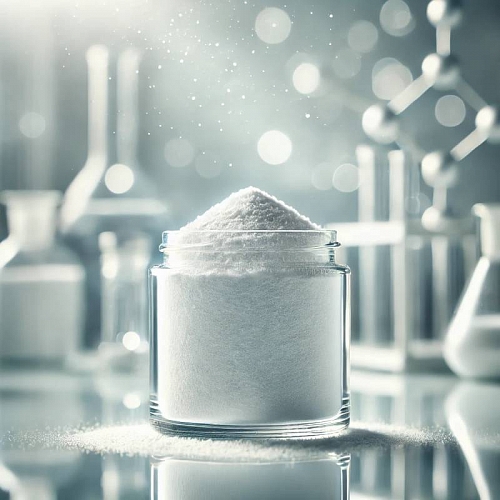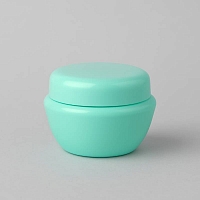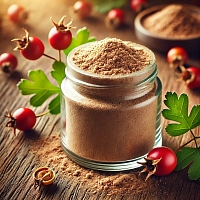-
 Absolutes
Absolutes
-
 Active Complexes
Active Complexes
-
 Actives and Peptides for Cosmetics
Actives and Peptides for Cosmetics
-
 Amino Acids
Amino Acids
-
 Food Flavorings
Food Flavorings
-
 Ayurveda
Ayurveda
-
 Vitamins
Vitamins
-
 Gelling Agents and Thickeners
Gelling Agents and Thickeners
-
 Hydrosols and Floral Waters
Hydrosols and Floral Waters
-
 Hydrolyzed Proteins
Hydrolyzed Proteins
-
 Fragrant and aromatic substances
Fragrant and aromatic substances
-
 Acids, Salts, Alcohols, and Alkalis
Acids, Salts, Alcohols, and Alkalis
-
 Preservatives and Antioxidants
Preservatives and Antioxidants
-
 Cosmetic Raw Materials
Cosmetic Raw Materials
-
 Dyes, Pearlescents, and Glitters
Dyes, Pearlescents, and Glitters
-
 Face Masks, Scrubs, and Dried Flowers
Face Masks, Scrubs, and Dried Flowers
-
 Oils, batters, macerates, oil mixtures
Oils, batters, macerates, oil mixtures
-
 Candle Supplies
Candle Supplies
-
 Melt and Pour Soap Bases
Melt and Pour Soap Bases
-
 Base for cosmetics, cream, serum, shampoo
Base for cosmetics, cream, serum, shampoo
-
 Fragrance Oils
Fragrance Oils
-
 Surfactants
Surfactants
-
 Peelings for Skin
Peelings for Skin
-
 Herbal Powders and Plant
Herbal Powders and Plant
-
 Silicones and Conditioning Surfactants for Hair
Silicones and Conditioning Surfactants for Hair
-
 Raw materials for dietary supplements
Raw materials for dietary supplements
-
 Packaging for Cosmetics and Perfumes
Packaging for Cosmetics and Perfumes
-
 Molds, Packaging, Tools
Molds, Packaging, Tools
-
 Organic Extracts
Organic Extracts
-
 Emollients for Cosmetics
Emollients for Cosmetics
-
 Emulsifiers
Emulsifiers
-
 Essential Oils
Essential Oils
Sodium Citrate: The Versatile pH Regulator and Chelating Agent for Cosmetics
Discover the multifaceted benefits of Sodium Citrate, a valuable cosmetic ingredient known for its exceptional pH buffering, chelating, and emulsifying properties. This sodium salt of citric acid is a white, crystalline powder that is readily soluble in water and plays a crucial role in the formulation of a wide array of personal care products. Its gentle yet effective nature makes it an indispensable component for maintaining product stability, enhancing performance, and ensuring skin compatibility.
Applications and Areas of Use in Cosmetics:
Sodium Citrate's diverse functionalities make it a key ingredient in numerous cosmetic formulations:
- pH Adjuster and Buffer: Sodium Citrate is primarily used to regulate and stabilize the pH of cosmetic formulations. Maintaining the optimal pH is crucial for product efficacy, preservation, and preventing skin irritation. It helps to keep the pH within the skin's natural acidic range (around 4.5-5.5), promoting a healthy skin barrier and preventing the growth of harmful microorganisms. This is particularly important in products like:
- Creams and Lotions: Ensures the stability and skin-friendliness of moisturizing and nourishing formulations.
- Cleansers and Washes: Helps to maintain a mild pH that doesn't strip the skin of its natural oils or cause dryness.
- Toners and Astringents: Contributes to the desired acidic pH that helps to tighten pores and balance the skin.
- Shampoos and Conditioners: Aids in maintaining a pH that is gentle on the scalp and hair, preventing frizz and promoting smoothness.
- Sunscreens: Ensures the stability and effectiveness of UV filters, which can be pH-dependent.
- Chelating Agent: Sodium Citrate acts as a chelating agent, meaning it can bind to metal ions present in the formulation or tap water. These metal ions can catalyze oxidation reactions, leading to product discoloration, instability, and reduced shelf life. By sequestering these ions, Sodium Citrate helps to:
- Prevent Discoloration: Maintains the original color and appearance of cosmetic products over time.
- Enhance Stability: Prevents the breakdown of other ingredients and extends the product's shelf life.
- Improve Performance: Prevents metal ions from interfering with the activity of other ingredients, such as antioxidants and preservatives.
- Emulsifying Aid: While not a primary emulsifier, Sodium Citrate can act as an emulsifying aid, helping to stabilize oil-in-water emulsions by reducing the interfacial tension between the oil and water phases. This contributes to a smoother and more uniform texture in:
- Emulsions: Supports the stability of creams, lotions, and other emulsion-based products.
- Dispersing Agent: Sodium Citrate can assist in the dispersion of pigments and other solid particles in cosmetic formulations, ensuring even distribution and preventing clumping in products like:
- Makeup: Contributes to the smooth application and consistent color of foundations, concealers, and other pigmented products.
- Buffering Agent in Exfoliants: In chemical exfoliants containing AHAs or BHAs, Sodium Citrate can be used as a buffering agent to control the pH and ensure a safe and effective level of exfoliation.
- Oral Care Products: Sodium Citrate is also found in toothpastes and mouthwashes where it can help to buffer the pH in the mouth and potentially aid in preventing tartar buildup.
Key Benefits for Cosmetic Formulations:
- Effective pH Regulation: Crucial for product stability, preservation, and skin compatibility.
- Powerful Chelating Properties: Prevents discoloration, enhances stability, and improves performance by binding metal ions.
- Supports Emulsion Stability: Acts as an emulsifying aid for smoother and more uniform textures.
- Aids in Pigment Dispersion: Ensures even color distribution in makeup products.
- Gentle and Well-Tolerated: Generally considered safe for use on the skin.
- Water-Soluble: Easily incorporated into water-based formulations.
- Versatile Ingredient: Applicable in a wide range of cosmetic product categories.
- Global Shipping: Our online store offers worldwide delivery.
Cosmetic Recipe: Gentle pH-Balanced Facial Toner
| Ingredient | Percentage (%) |
|---|---|
| Distilled Water | 89.5% |
| Glycerin | 5.0% |
| Sodium Citrate | 1.5% |
| Citric Acid | q.s. to pH 5.0 |
| Preservative (e.g., Phenoxyethanol) | 1.0% |
| Panthenol (Pro-Vitamin B5) | 2.0% |
| Optional: Floral Hydrosol (e.g., Rose) | Up to 1.0% |
Instructions:
- In a clean beaker, combine the distilled water and glycerin. Stir until well mixed.
- Add the Sodium Citrate and stir until it is completely dissolved.
- Using a pH meter or pH test strips, adjust the pH of the solution to approximately 5.0 by adding small amounts of Citric Acid while stirring continuously.
- Add the preservative and Panthenol to the mixture and stir thoroughly.
- If desired, incorporate the floral hydrosol.
- Carefully pour the toner into a clean and sanitized bottle.
Application Recommendations:
- After cleansing your face, apply a small amount of the toner onto a cotton pad.
- Gently sweep the cotton pad over your face and neck, avoiding the eye area.
- Allow the toner to air dry before applying your serum or moisturizer.
- Use once or twice daily as part of your skincare routine.
- Store the toner in a cool, dark place.
- When adjusting the pH, add citric acid gradually and check the pH frequently to avoid over-acidifying the solution.
- The ideal pH for a facial toner is typically between 4.5 and 5.5 to maintain the skin's natural acid mantle.
- This recipe provides a basic framework; you can customize it by adding other water-soluble extracts or humectants based on your skin's needs.
And also go to the Blog from Мыло Опт, where we share useful information about creating the right natural cosmetics
| INCI | Sodium Citrate | |
| Other | ||
| Application | in cosmetics — creams, masks, gels, serums, shampoos, antiseptics, toothpastes in the food industry — acidity regulator, stabilizer (E331), flavor enhancer in pharmaceuticals — components for solutions and tablets, acidity regulator in syrups in household chemicals — detergents, dishwashing detergents, water softeners in textiles and photography — solution stabilizer and anticoagulant in medicine — anticoagulant in donor blood and plasma | |
| Att brand | China | |
| Color product | white | |
| Dosage | in cosmetics — 0.1–1.0% in pharmaceuticals — 0.5–2.0% in the food industry — up to 3.0% (depending on the product) in household chemicals — up to 5% in medicine — according to pharmacopoeial standards | |
| Features | All information presented on the site is for reference only | |
| Minimum count | 1 | |
| Name | Sodium citrate, 100 g | |
| Other names | sodium citrate, trisodium citrate, Sodium salt of citric acid, E331 | |
| Packaging | container for transportation | |
| Packing | 100 g | |
| Properties | buffer substance (acidity regulator), chelating agent, stabilizer of emulsions and solutions, helps to preserve aroma and color, softens water, reduces the irritating effect of acids, regulates viscosity Purpose: pH stabilization, oxidation prevention, preservative effect in combination with other agents, enhancement of the effect of preservatives, anticoagulant in medicine and cosmetics | |
| Purpose | used as an antiseptic, softening and stabilizing agent, a component of the fat phase, surfactants and emulsifiers, a solvent for active substances, a component for perfumes and food flavorings | |
| Solubility | in the water | |
| View | powder | |
| Valid until | 09.2026 | |










 Add to cart
Add to cart Buy in 1 click
Buy in 1 click

 Add a review
Add a review To favorites
To favorites To compare
To compare













